We associate items with cultures or eras because it helps our brains categorize information. We hear the word "pyramid," and we instantly associate it with ancient Egypt, despite the numerous non-Egyptian pyramids in the world. Many of these associations are incorrect. Some things we strongly associate with the modern world are actually quite older.
我们常常将身边的事物与本族的文化或者我们现在所处的年代联系到一起,因为这样的联系可以帮助我们的大脑将接收到的信息分门别类。比如,当我们听到"金字塔"这个词时,尽管世界上大多数金字塔并不属于埃及,我们的大脑也会下意识地将金字塔与古埃及联系起来。由此可见,很多类似于这样的联系是不准确的。像是那些我们认为和现代生活密不可分的事物,其实在很早以前就存在了。
10.说唱对决
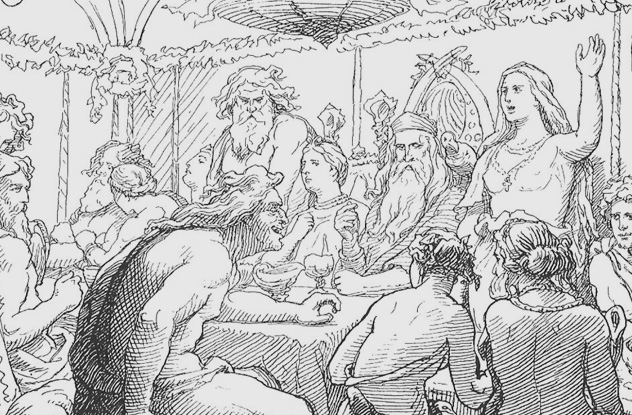
Rappers in early 1980s New York might get most of the credit for this type of lyrical performance, but the practice is actually much older and comes from Scotland. It is called flyting and it was practiced by makaris (Scottish poets) during the 15th and 16th centuries. In this contest, two poets would engage in an exchange of verbal abuse, oftentimes in verse, and the winner was usually decided by the audience. The winner would then enjoy a large cup of mead or beer and more often than not would invite the loser to drink as well.
大部分人认为说唱这种特殊的词汇表演技巧起源于那些在19世纪80年代早期出现的纽约说唱家(Rappers)。但事实上,早在这段时间以前,苏格兰就已经有了这样的词汇表演技巧。他们将这个词汇比赛似的表演叫做flyting。Flyting最早出现在15世纪和16世纪,是由一个叫做马卡瑞斯的苏格兰诗人发明的。比赛规则为:两名参赛的诗人在比赛过程中对骂,然后由观众们来决定最终的获胜者。获胜者在比赛结束后会豪饮一杯蜂蜜酒或者啤酒以示庆祝,但是他们不会邀请战败者来共同庆祝。
At one point, flyting was so popular in Scotland that the obscenities and vulgarities were overlooked, though they were otherwise not permitted in public. Flytes would usually take place in large rooms like feasting halls, but the most skilled poets would engage in flyting at the royal courts. King James IV was known to be a big fan of flyting, as well as James V.Unfortunately, not many flytes from those times have survived. The most memorable one took place at the aforementioned court of James IV. It is known as "The Flyting of Dunbar and Kennedy" and took place between Walter Kennedy and William Dunbar.
那个时期的Flyting在苏格兰十分受欢迎,因为在比赛时可以尽情使用那些在公共场合不允许使用的粗俗和下流的词语。比赛通常会在宴会大厅里举行,不过那些知识最渊博的诗人的比赛通常会在宫廷内举行。詹姆斯四世与詹姆斯五世都十分热衷于这项比赛。遗憾的是,这项比赛并没有流传到现在。最盛大的一场比赛是在詹姆四世的宫廷里举行的。这场比赛被称为"肯尼迪与邓巴的争论",参赛者就是著名诗人沃特肯尼迪和威廉·邓巴。
9.假牙
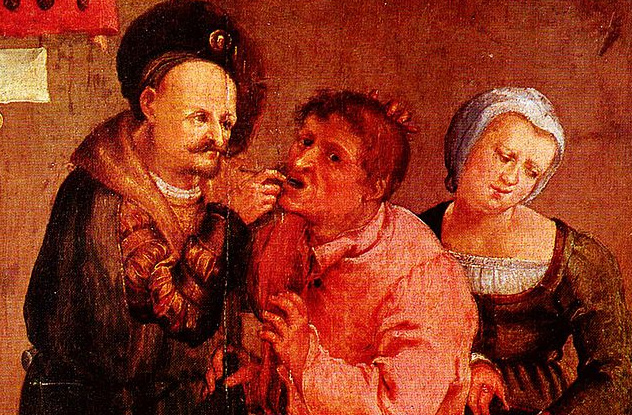
Dentures' long history is not particularly surprising. George Washington, for example, was a famous wearer of dentures (although none of his were made of wood, despite the myth). However, dentures go back much further than that. To the time of the Etruscan civilization, in fact, located in modern Italy between the eighth and fourth centuries B.C.
假牙拥有悠久的历史这件事应该在人们意料之中。乔治·华盛顿就是一个著名的假牙佩戴者(大家都说他的假牙是木头做的,尽管事实并不是这样)。但事实上假牙的出现要追溯到公元前8世纪到公元前4世纪的伊特鲁里亚(现为意大利)文明时期。
A lot of evidence suggests that the Etruscans were the first to create false teeth as early as 700 B.C. Ancient skulls have been discovered with gold bands inside them, and in Marzabotto, a skull was found with an artificial tooth still attached using gold wire. Apart from dentures, individual crowns have also been discovered, made for molars and canines.Their dentistry skills were surprisingly advanced, and the dentures they made were quite similar to those still in use centuries later, even in the time of the aforementioned Washington. They were made using either animal or human teeth, which were fixed onto a gold band with metal pins and then secured in place inside the mouth.
许多证据表明伊特鲁里亚人早在公元前700年就发明了假牙。远古时期的人类头骨化石里就有金子做的类似于绑带一样的用来固定假牙的东西,并且在玛扎博多发现的人类头骨里也有用金线固定的人造牙齿。除了假牙以外,人们还发现了一顶用臼齿和犬齿制作的王冠。他们的牙科学的先进程度令人咋舌,并且他们制造的假牙与几个世纪之后所使用的假牙别无二致,包括前面提到的华盛顿的假牙也是一样。这些假牙的制作材料不是人牙就是兽牙,然后这些假牙再被用金子做的绑带和金属的小钉子固定在人们的口腔内。
8.报纸
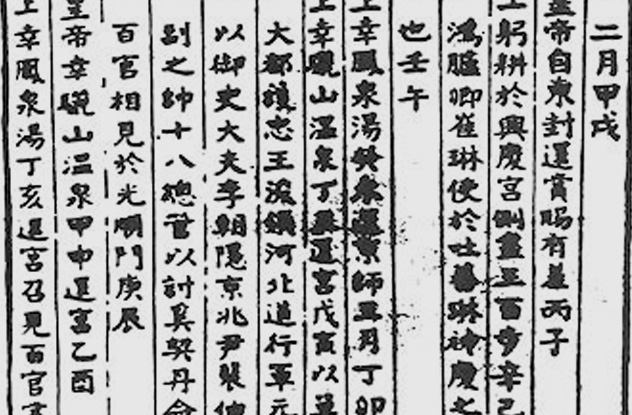
For a publication to classify as a newspaper, it must publish up-to-date information covering a range of topics at regular intervals and be reasonably accessible to the public. Some would say that a newspaper also has to be printed, which means that they couldn't have existed prior to the printing press. However, if we overlook that small detail, then newspapers go back a lot farther. Ancient Rome and China both had handwritten news sheets presented to the public on a regular basis detailing current events and other important happenings.
如果有一种出版物被称作报纸,那么它在出版时不仅要刊登那些最新的并且涵盖了日常生活各个方面的消息,还要与公众有某种程度的联系。谈到报纸出现的时间,有人会说报纸毕竟也是被印刷出来的,意思就是说报纸的出现必然要晚于印刷术的出现。然而,如果我们忽略掉这个小细节,那么我们就会知道报纸出现的时间实际上比印刷术出现的时间更早一些。古时候的罗马和中国都有每天在特定的时间发表的手写的报纸,并且报道的内容通常都是一些琐事或者其他一些重要的大事。
In Rome, it was known as Acta Diurna and is considered to be the first daily gazette, even if it wasn't even written on paper (it was carved in stone or metal). At first, it only covered legal proceedings and the results of trials. As its popularity grew, it expanded to also include politics, military campaigns, births, deaths, and executions.In China, the earliest forms of newspapers were known as tipao (also Di Bao). They were imperial bulletins published during the Tang Dynasty. During the Kaiyuan era, they were replaced with Kaiyuan Za Bao, an official publication handwritten on silk and distributed mostly to imperial officials.
在罗马,一个名叫"罗马公报"的报纸被看作当时的第一份日报,尽管报纸的内容并不是书写在纸上的(是被镌刻在石头或金属上的)。一开始,罗马公报的内容仅仅包括法律审判的过程和案件审判的结果。但当它渐渐开始变得受欢迎后,内容便逐渐扩充到了时政、军事、人们的出生与死亡以及官方执行的日常任务。在中国,我们知道的最早的报纸是邸报。唐朝时期,邸报相当于是皇家公告。然后在开元年间,邸报被开元早报所取代。开元早报是手写在丝绸上的官方出版物,大部分被分发给臣子。
7.牙刷
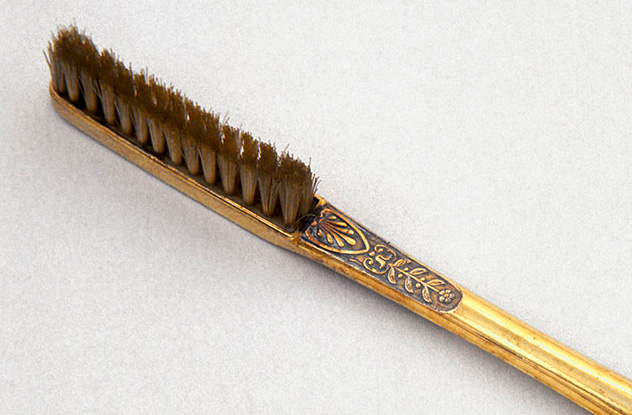
Early dental techniques were of course a lot more primitive. In fact, the first "toothbrushes" were nothing but sticks with frayed ends that were rubbed against the teeth. While these weren't particularly efficient, they at least gave the user refreshing breath. Such "chew sticks" were found in ancient China, Egypt, and even Babylonia, dating back to 3,000 B.C.
古代的牙科在技术上比起现在自然是粗糙了不少。事实上,世界上第一把牙刷仅仅就是一根木棍,并且这根木棍的某一端可以用来摩擦牙齿。尽管这样的牙刷并不是特别有效,但至少也给予了刷牙者一个清新的口腔。这种像"磨牙棒"一样的东西在公元前3000年的中国、埃及以及巴比伦就出现了。
Something similar to a modern toothbrush didn't appear until the 15th century in China. It was made out of bone or bamboo and had natural bristles made out of the hairs of a hog's neck. Also around that time, China started trading with Europe, so the design was brought there before long. However, Europeans found the hog hairs too rigid and preferred to replace them with softer horse hairs. While the design of the toothbrush would be updated from time to time, it really didn't turn into the modern brush we know today until the beginning of the 20th century, when Wallace Carothers invented nylon for DuPont. Up until that point animal hairs kept being used for the bristles.
一直到了15世纪,中国人才发明出了与现代的牙刷相似的牙刷。这样的牙刷是由骨或者竹子以及猪脖子上的鬃毛做成的。同样是在这个时期,中国与欧洲开始进行贸易活动,因此在这样的牙刷在被发明后不久就流传到了欧洲。但是欧洲人认为猪的鬃毛太硬了,所以他们用较柔软的马毛代替了猪的鬃毛。尽管牙刷的设计在这之后也不断地更新,我们今天使用的牙刷也是到了20世纪初期才逐渐成形的。当时华莱士-卡罗瑟斯为杜邦公司发明了尼龙材料,而在这之前牙刷的刷毛都是由动物的毛做成的。
6.社会福利
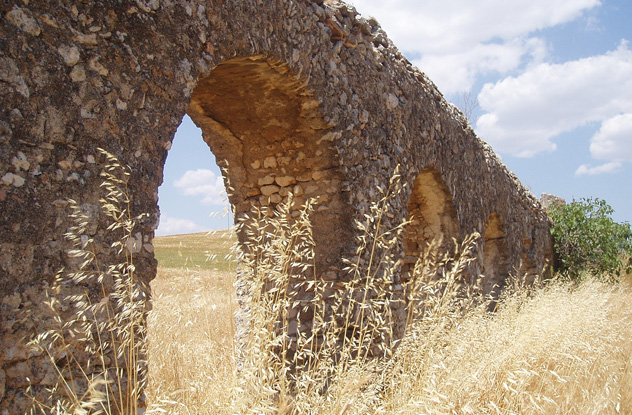
Ancient Rome had quite a few programs in place to provide its citizens with subsidized food. At first, this was not an obligation yet was still quite common when either the government or wealthy individuals wanted to gain favor with the public. They would make donations of corn to the people, known as frumentatio. In 123 B.C., however, a tribune by the name of Gaius Gracchus introduced Lex Frumentaria. Through this law, each citizen of Rome was entitled to an amount of wheat each month available at a reasonable price (somewhere around half the market price). This was only available to fathers of families but was not restricted only to poor Romans.
古罗马在很早以前就有许多为市民提供补贴食物的活动。最开始,这并不是一项政府或者某一个有钱人想要从公众身上得到好处的普遍的义务。他们直接将粮食送给公众,这样的行为被称作frumentatio。在公元前123年,一个叫做盖约·格拉古的民权保护者出台了新粮食分配政策。通过这项条例,罗马的每个公民每个月都可以得到以公道的价钱(一般都是市场价的一半)售卖的定量小麦。但是对于半价售卖的小麦,有劳动力的家庭,其购买的数量会受到限制,而贫穷的罗马人购买半价小麦的数量是不受限的。
Roman emperors also had various approaches when it came to dealing with the poor. It was not uncommon for emperors back then to give money to each Roman to celebrate a certain event (usually a military victory). One emperor who instituted new welfare programs was Trajan. While he increased the number of citizens who could receive free grain from the state, he also introduced alimenta, a publicly funded institution that benefited poor children.
罗马帝王也有很多补助贫困公民的政策。但是让罗马帝王回到那种一到庆祝某个重大事件(比如战争的凯旋)就随意分发钱财的时代自然也是不太现实的。因而罗马帝王图拉真出台了一个新的福利政策:他增加了可以免费得到粮食的公民的数量,并且他还创立了一个名叫alimenta的公众基金机构来资助贫穷的儿童。
















